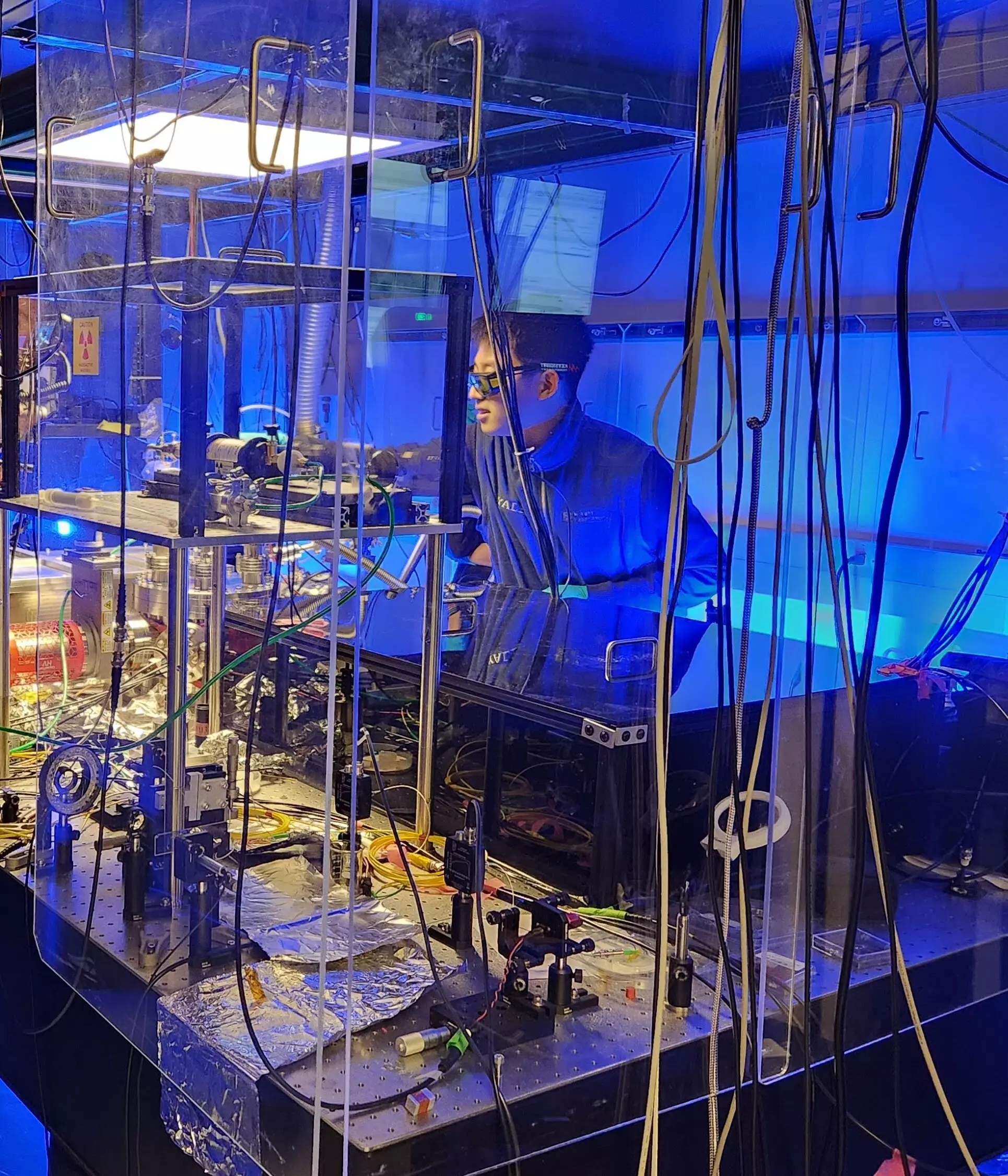In the realm of particle physics, the quest for understanding the fundamental building blocks of matter has reached exhilarating new heights. Scientists have long grappled with the challenge of detecting elusive particles, particularly those whose interactions are subtle and difficult to measure. Recent advancements in detection technology are paving the way for deeper insights into the subatomic world, and a groundbreaking study from Yale University promises to propel these efforts even further. The methods being explored not only enhance our understanding of nuclear decay but also have the potential to unlock mysteries that have lingered in physics for decades.
Understanding Nuclear Decay through Mechanical Detection
At the core of this research is the innovative approach devised by a team led by David C. Moore, which focuses on the mechanical detection of individual nuclear decays. Traditional detection methods have struggled with certain types of particles, especially neutral ones that escape detection due to their lack of charge. This has been a roadblock for physicists eager to explore phenomena such as dark matter or to verify theories pertaining to nuclear processes. Moore and his colleagues have introduced a method that changes the game by allowing researchers to observe all particles emitted during a nuclear decay event, including those that may have eluded previous detection systems.
The methodology revolves around the monitoring of dust-sized particles embedded with radioactive nuclei. When a single nucleus undergoes decay, the team is able to detect this event through shifts in the electric charge of the particle—an indication that a charged particle such as an alpha particle has been emitted. Such a precise approach differentiates this work from existing technologies, making it possible to capture even the quietest of signals in the noisy world of particle interactions.
Pioneering Techniques in Action
In their initial experiments, the Yale researchers demonstrated their method’s capability to detect individual nuclear decays with unprecedented sensitivity. The ability to observe the recoil of particles at an astounding scale of just tens of nanometers marks a significant technological advancement. Their technique leverages laser light scattered from the particles, allowing researchers to track minute movements with remarkable accuracy. This meticulous attention to detail opens up exciting avenues for applications not just within nuclear physics, but across broader realms of scientific inquiry.
The implications of such sensitivity are vast. If researchers can track events that occur even infrequently—like once a day—they may contribute to enhanced methods of nuclear monitoring and non-proliferation efforts. It paints a hopeful picture of the future of physics where detecting long-lived isotopes becomes more feasible and systematic.
Exploring New Frontiers in Particle Physics
The ramifications of this research stretch far beyond merely understanding nuclear decay. The detection mechanisms developed by Moore’s team could soon transform the landscape of particle physics. Possibilities such as searching for dark matter and exotic particles now seem more tangible. By harnessing these refined detection techniques, scientists may gather new evidence to support or challenge existing theories, further expanding our comprehension of the universe.
Moreover, the ambition to extend these methodologies to smaller nanoparticles demonstrates a commitment to pushing the limits of what’s possible. Detecting momentum shifts from an escaping neutrino signifies an extraordinary leap that could reshape our understanding of neutrino physics and its role in the cosmos.
An Exciting Horizon Ahead
As the field of particle physics stands on the precipice of unparalleled advancements, Moore and his colleagues exemplify the ingenuity and tenacity required to push boundaries. Their research is not just an academic exercise; it represents a stirring call to action for continued innovation in detecting and understanding fundamental particles. The rich tapestry of the subatomic world awaits exploration, and this pioneering work is a vital thread in that ongoing narrative. With every discovery, we inch closer to comprehending the very fabric of reality itself—a journey that promises to be as rewarding as it is challenging.


Leave a Reply